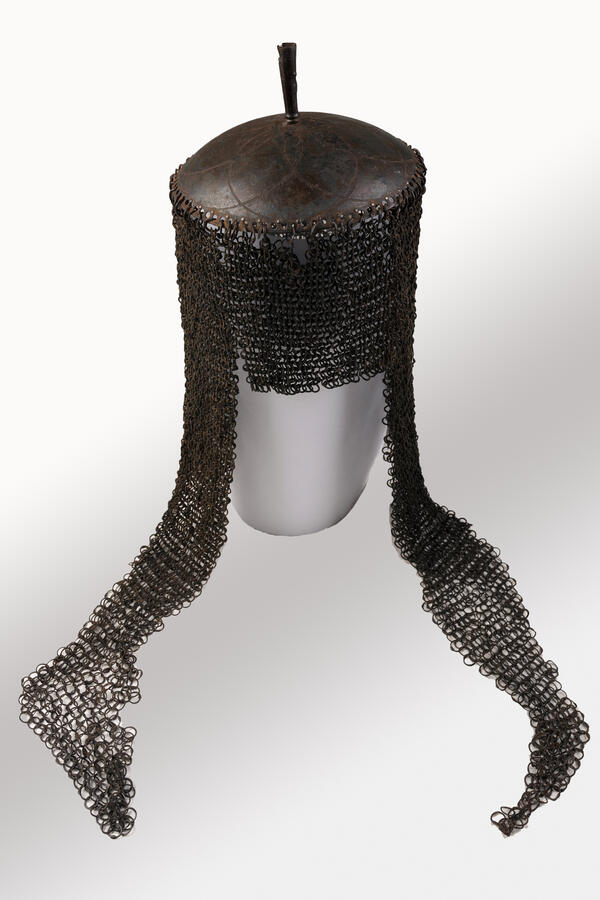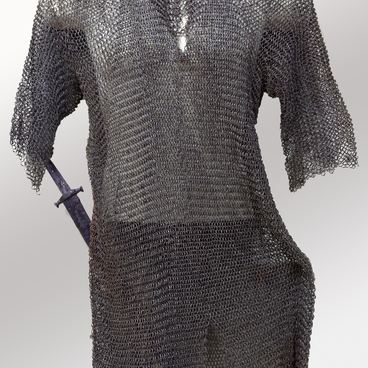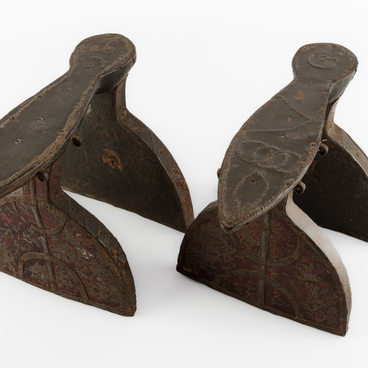The name of this helmet comes from the Arabic name for Egypt — Misr. It was from Egypt that this very original helmet began its journey around the world. In Western Asia, similar helmets had been known since about the 14th century. Later they became most popular with the warriors in that region. They were especially common in Turkey. A little later, this type of helmet was brought to the Caucasus, Russia, Hungary, and India. In the Caucasus, they were used the longest.
The light, simple and inexpensive helmet was perfect for mounted and foot soldiers. It protected the head from the light sabers so common in the regions. Along with the chain mail, the misyurka helmet was part of the protective armament of the Adyghe warriors until the middle of the 19th century. In different periods, this helmet had undergone changes, but the basic design remained the same.
The helmet presented in the exhibition belongs to the type of misurka-napleshnik. In 1962, it entered the collection of the Historical Museum. The head of the helmet is a round, slightly convex steel plate, to which a chain mail bar is attached. In the middle there is a mount for a hackle — an ornament made of feathers or a hair bundle attached to a military headdress. An aventail — a chain mail mesh attached to the head — was a necessary element of this type of helmet. It was often long and extended to cover the warrior’s head, neck and shoulders. The misyurka also has an aventail on the front. At first, it seems that it should have covered the warrior’s eyes. Below there is an open rectangular area which looks surprising: it seems that the aventail would be at the level of the mouth. The fact is that such misyurkas were necessarily worn on top of a rather high shock-absorbing balaclava, so the aventail did not close the eyes, leaving an excellent overview in the battle. In general, all types of helmets were worn with a balaclava, and in the case of such a lightweight helmet design, the balaclava simply had to be made thick and durable. Misyurkas were intended to protect mainly from cutting blows. Such a helmet could not protect its owner from a piercing or crushing blow with heavy weapons.
The light, simple and inexpensive helmet was perfect for mounted and foot soldiers. It protected the head from the light sabers so common in the regions. Along with the chain mail, the misyurka helmet was part of the protective armament of the Adyghe warriors until the middle of the 19th century. In different periods, this helmet had undergone changes, but the basic design remained the same.
The helmet presented in the exhibition belongs to the type of misurka-napleshnik. In 1962, it entered the collection of the Historical Museum. The head of the helmet is a round, slightly convex steel plate, to which a chain mail bar is attached. In the middle there is a mount for a hackle — an ornament made of feathers or a hair bundle attached to a military headdress. An aventail — a chain mail mesh attached to the head — was a necessary element of this type of helmet. It was often long and extended to cover the warrior’s head, neck and shoulders. The misyurka also has an aventail on the front. At first, it seems that it should have covered the warrior’s eyes. Below there is an open rectangular area which looks surprising: it seems that the aventail would be at the level of the mouth. The fact is that such misyurkas were necessarily worn on top of a rather high shock-absorbing balaclava, so the aventail did not close the eyes, leaving an excellent overview in the battle. In general, all types of helmets were worn with a balaclava, and in the case of such a lightweight helmet design, the balaclava simply had to be made thick and durable. Misyurkas were intended to protect mainly from cutting blows. Such a helmet could not protect its owner from a piercing or crushing blow with heavy weapons.






